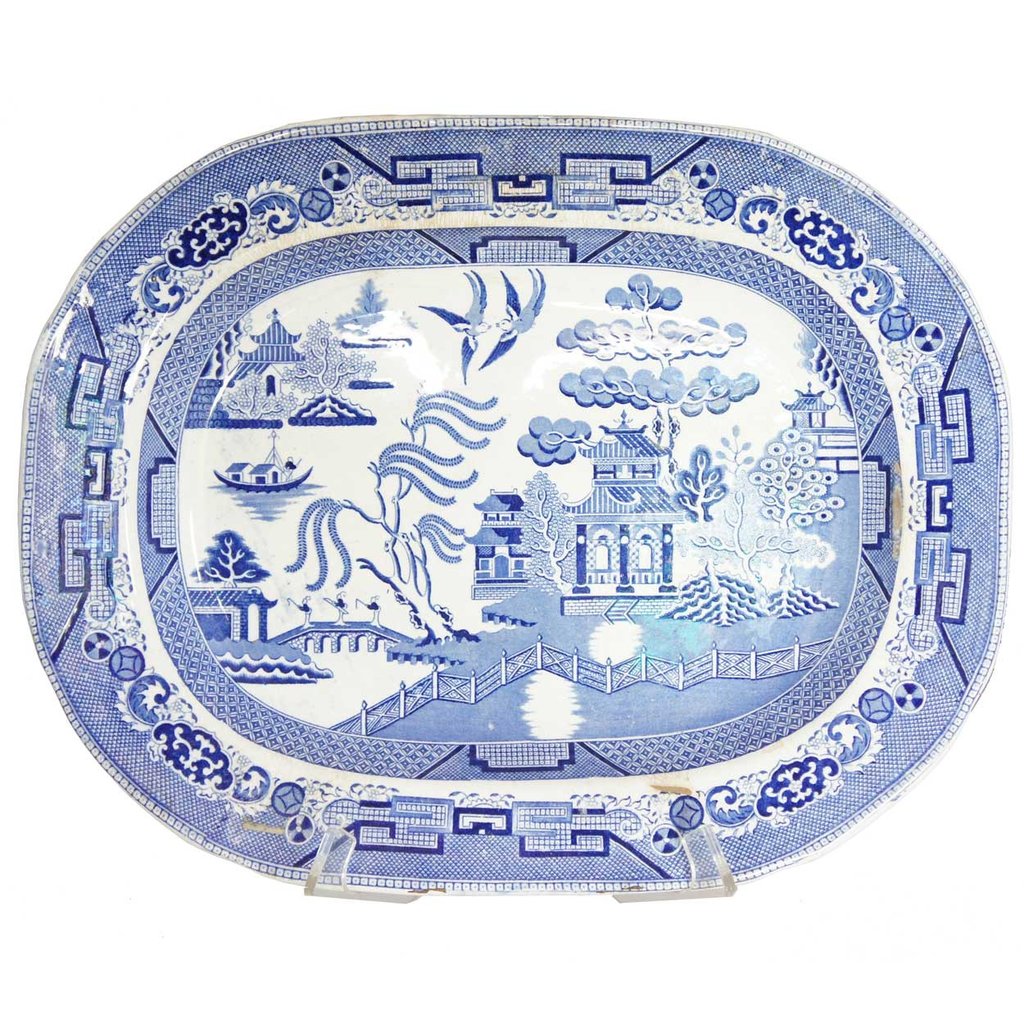I have several pieces of Blue Willow china but not a complete set. The largest piece is a platter that is 15 inches across. One friend tells me that Blue Willow platters are valuable antiques but another told me that Woolworth’s used to sell Blue Willow and that I should just donate my pieces to charity. The pieces have no marks but I know they are at least 60 years old.
I’ve recently been re-reading Lucy Maude Montgomery’s “Anne of Green Gables” series. These stories, originally published over a century ago, tell all about the adventures of a young girl growing up in rural Prince Edward Island. In the first book, town busybody Rachel Lynde plans a booth for the church fair. She wants the booth to have the look of an olde time kitchen so she decorates the booth with Blue Willow china.
Blue Willow porcelain was first imported to England from China in the 18th century. By 1780, porcelain manufacturer Thomas Minton had reproduced the pattern on a line of his dishware. Over the years Royal Worcester, Spode, Wedgwood, and Swansea all followed with their own versions. Blue Willow has never been out of production somewhere in the world ever since.
Blue Willow china tells the story of a forbidden love.
One of the reasons for the popularity is the charming detail of a castle, a fence, a boat on a river, two figures crossing a bride and a pair of birds. All of the details are components of an ancient love story; several variations exist but the simple version is as follows.
A young Chinese noblewoman falls in love with her father’s clerk. Her father forbids them from seeing each other and fences his daughter within the garden. As the father plans to marry his daughter off to one of his pals, the clerk arrives by boat to spirit the daughter away. The young clerk frees the noble woman and the two lovers flee across a bridge. They are pursued by her father’s guards and killed. The gods take pity on the deceased sweethearts: they transform them turn into two lovebirds who fly together forever.
The great production of Blue Willow over the past two and a half centuries means a great deal of variety in values. Eighteenth and nineteenth century porcelain examples can command prices into the thousands and even some 20th century transferware pieces are highly collectable. Your stoneware pieces have some age to it as evidenced by the crazing (tiny cracks in the glaze) but the crazing also detracts some from its value. From the photographs, I believe you have both 19th and 20th century pieces by different makers. The group has a monetary value of about $100 and a delightful story for the ages.


